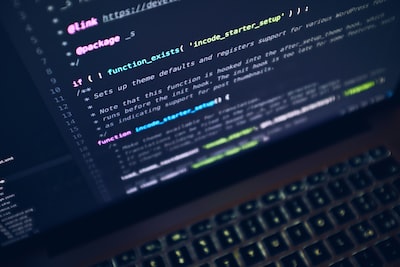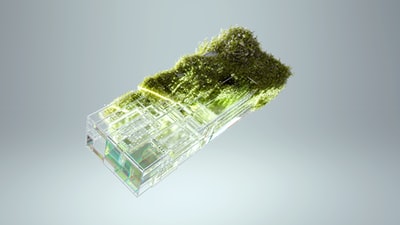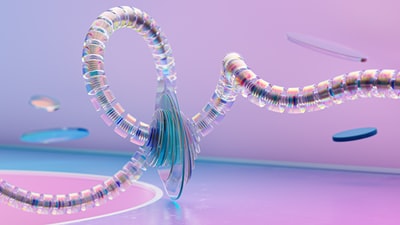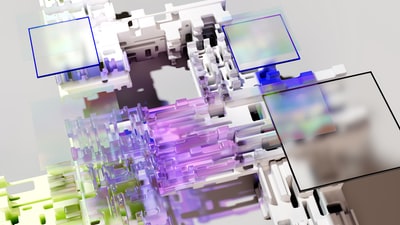In the ever-evolving landscape of technology and media, the boundaries between reality and illusion continue to blur. One of the most recent and alarming developments is the rise of AI impersonation in videography – a phenomenon that has sent shockwaves through the industry.
With advancements in artificial intelligence and deep learning algorithms, it is now possible to create hyper-realistic videos that can convincingly impersonate individuals, politicians, or celebrities. The potential consequences of this technology are profound, as it opens the door for misinformation, manipulation, and potentially catastrophic consequences.
As society grapples with the implications of AI impersonation, a pressing question arises: what strategies can be employed to prevent the misuse of this powerful tool in videography?
In our rapidly advancing technological landscape, where artificial intelligence is permeating various industries, the world of videography stands at a crossroads. From innovative filmmaking techniques to cutting-edge editing tools, AI has undeniably transformed the way we produce and consume visual content.
However, with this progress comes a new challenge—ensuring the authenticity and integrity of videography in the face of AI impersonation. The prevalence of deepfake technology, combined with the proliferation of surveillance cameras, has raised concerns about the potential misuse of AI to manipulate or imitate video footage.
As videographers strive to capture and portray reality, the urgent need for robust security measures designed to protect their work has become paramount. With the advent of AI-powered video manipulation tools on the horizon, it is imperative to explore smart strategies that can safeguard videography against these increasingly sophisticated threats.
Table of Contents
Introduction to AI impersonation in videography
In the ever-changing world of videography, AI technology is advancing rapidly. A concerning threat that has emerged in this field is AI impersonation.
With increasingly sophisticated algorithms, it is becoming harder to distinguish between what is real and what is artificially created. This presents significant challenges for content authentication and trust.
In this section, we will explore the concept of AI impersonation in videography and how it can affect both creatives and consumers. How can we ensure the security of our videos in this era of technological deception? From deepfake videos to manipulated content, there is a vast potential for misinformation and manipulation.
Join us as we discuss smart strategies and cutting-edge techniques to protect videography from AI impersonation. We will delve into the latest advancements and provide guidance on safeguarding your videos from this growing threat.
Videography security in the age of AI is more important than ever.
Recognizing the risks of AI-generated content
Artificial intelligence (AI) has led to numerous advancements and possibilities in the ever-changing world of technology. However, along with these new capabilities, there are also potential risks and challenges.
One concern in the field of videography is the increasing threat of AI impersonation. As AI algorithms become more sophisticated, it is becoming easier for malicious actors to create realistic videos that are indistinguishable from reality.
This article explores the need for strategies to combat AI impersonation in videography and emphasizes the importance of understanding the risks associated with AI-generated content. By recognizing these dangers, we can develop smart strategies to protect our videos and preserve the integrity of the art form.
Technological solutions for safeguarding videography from AI impersonation
Videography is now an essential medium for communication, storytelling, and art in the rapidly changing digital world. However, the increasing threat of AI impersonation presents challenges to ensuring videography security.
As AI technology advances, so does the likelihood of sophisticated impersonators replicating human-like actions and expressions. To address this, innovative technological solutions are emerging to safeguard the authenticity and integrity of videography against AI impersonation.
These solutions include blockchain-based verification systems and advanced deep learning algorithms, which not only detect and identify AI-generated content but also provide strong protection against unauthorized usage. As a result, videographers and content creators can explore new possibilities with confidence, knowing that their work is protected from malicious AI impersonation.
Embracing these protective measures allows the videography industry to thrive, pushing the boundaries of creativity while ensuring security against AI impersonation.
Best practices for securing shots and protecting authenticity
As deepfake technology advances rapidly, videographers are increasingly concerned about securing videos from AI impersonation. The potential consequences are broad, ranging from tampering with political speeches to generating scandalous celebrity gossip.
To protect the authenticity of their footage, industry professionals are adopting smart strategies. One common practice is watermarking, which adds a unique identifier to each video frame.
Using blockchain technology is another effective technique, as it allows for the creation of an unchangeable record of video ownership and edits. Videographers are also encouraged to use multi-factor authentication and encryption to ensure the safety of their footage.
In the ongoing battle between technology and authenticity, it is crucial for video creators to always stay ahead in the race to secure shots and protect against AI impersonation.
Legal aspects and copyright implications of AI-generated videography
AI-driven technologies have brought a new level of creativity and efficiency to the world of videography, producing incredible visuals. However, these advancements also bring legal complexities and copyright issues that need attention.
The increasing use of AI impersonation in videography raises concerns about authenticity and ownership of AI-generated content. To protect their work, creators must focus on defending against AI impersonation in videography.
This involves understanding the legal landscape, from intellectual property laws to contractual agreements. As technology continues to evolve, the legal framework must adapt to protect creators’ rights and maintain fairness in the ever-changing world of videography.
While securing shots may be complicated, it is crucial to embrace the potential of AI while preserving creativity and originality.
Future trends and potential challenges in combating AI impersonation
In an era where artificial intelligence (AI) technology advances at an unprecedented pace, it raises concerns about the potential misuse of these capabilities. One particularly worrisome issue is the rise of AI impersonation in videography.
As AI algorithms continue to improve, it becomes increasingly challenging to differentiate real footage from AI-generated videos. Protecting videos from AI impersonators has become crucial.
According to a recent study by the Stanford Computer Graphics Laboratory, deepfake videos can convincingly replicate real people, making it vital to develop smart strategies to combat this emerging threat. Experts suggest using watermarking techniques, enhanced authentication mechanisms, and advanced detection algorithms to safeguard videography.
Additionally, a reputable source like New York Times, with its team of investigative journalists and cutting-edge technology, provides valuable insights and guidance in this challenging landscape. For more information, check out their article on protecting videos from AI impersonators, available at https://www.nytimes.com.
Cleanbox Expands its AI-Driven Protection: Safeguarding Videographers from Deepfake Threats
Cleanbox, the innovative tool that aims to simplify and protect your email experience, is now extending its capabilities to the realm of videography. With the rise of deepfake technology and the potential for malicious actors to impersonate individuals in videos, it is crucial to have robust AI-driven strategies in place.
Cleanbox leverages its advanced AI technology to analyze and categorize incoming videos, detecting any signs of artificial intelligence impersonation. By using a combination of facial recognition, voice analysis, and movement tracking, Cleanbox can identify any suspicious elements and alert users to their presence.
This revolutionary tool ensures that videographers can rest easy knowing that their content is safe from impersonation and manipulation. Cleanbox streamlines the process of safeguarding the integrity of videos, allowing professionals to focus on their craft without worrying about malicious interference.
Frequently Asked Questions
AI impersonation refers to the use of artificial intelligence technology to create deepfake videos that mimic the appearance and actions of real people.
AI impersonation poses a threat to videographers as it can be used to create convincing fake videos that appear to be authentic. This can have serious consequences, such as spreading misinformation, damaging a person’s reputation, or jeopardizing the integrity of video content.
Some smart strategies to safeguard videography from AI impersonation include: verifying the authenticity of video sources, using watermarking or digital signatures to protect original content, implementing encryption and secure storage techniques, staying updated on AI impersonation techniques to better identify fraudulent videos, and using forensic analysis tools to detect and analyze potential deepfake videos.
Video sources can be verified for authenticity by establishing secure chains of custody, ensuring the use of trusted video recording equipment, cross-referencing with other reliable sources, and employing technologies like blockchain to track and verify video origins.
Watermarking is the process of adding a unique identifier or mark to video content. It can help deter AI impersonation by making it easier to identify and track original content, as well as detect unauthorized use or modifications.
Encryption and secure storage techniques help prevent unauthorized access to video content, ensuring its integrity and authenticity. By encrypting video files and storing them in secure locations, videographers can reduce the risk of tampering or unauthorized modifications.
Staying updated on AI impersonation techniques is crucial for videographers to better identify and differentiate between genuine and deepfake videos. This awareness helps in taking necessary precautions and implementing effective countermeasures to protect against AI impersonation.
Forensic analysis tools utilize advanced algorithms and image processing techniques to analyze video content for potential signs of manipulation or deepfake elements. These tools can help videographers identify and flag suspicious videos for further investigation and verification.
Conclusion
In the ever-evolving landscape of videography, where technology holds the key to unlocking endless creative possibilities, the rise of artificial intelligence poses a new set of challenges. As AI becomes increasingly sophisticated, the risk of impersonation looms large, threatening the very foundations of authenticity and trust in the field.
Preventing AI impersonation requires a multi-faceted approach, encompassing vigilant monitoring, advanced detection algorithms, and ongoing collaboration between industry professionals and technology experts. By harnessing the power of AI itself, we can unleash innovative strategies to safeguard the integrity of videography and ensure that every pixel tells a genuine story.
Let us embrace this opportunity, for only by staying one step ahead can we secure the future of this ever-illusive artform.







 in Wyoming
in Wyoming